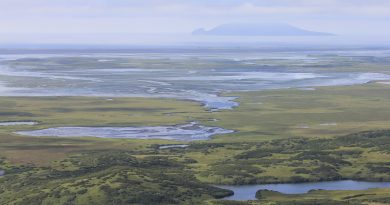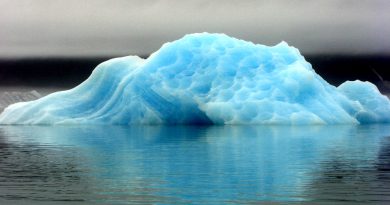Experts warn of potentially ‘deadly’ great power games in the Arctic
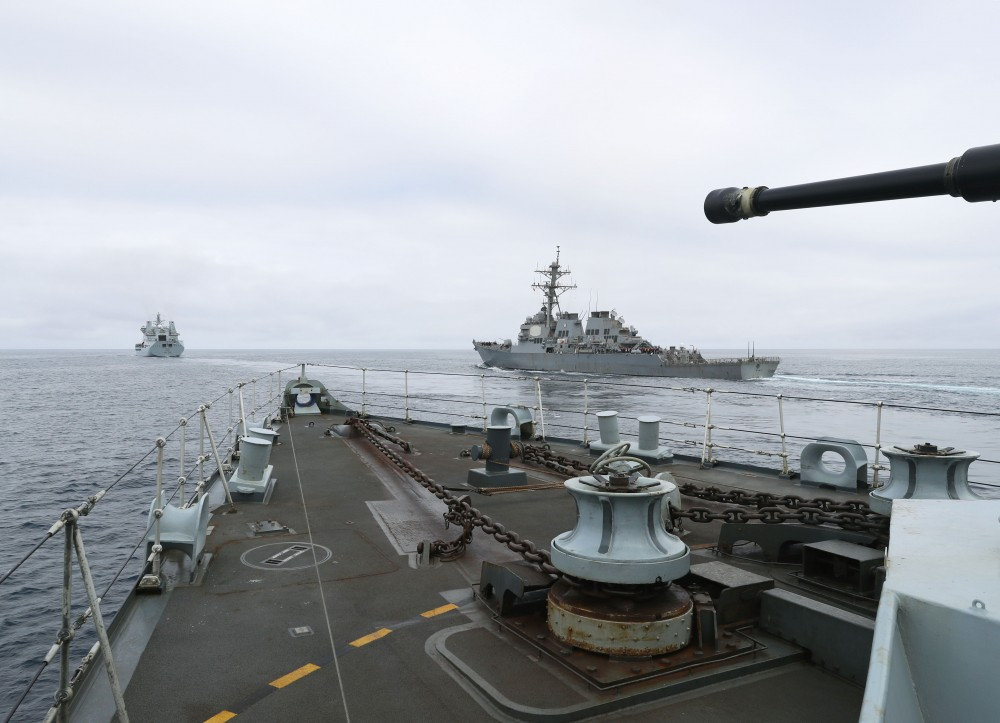
The joint U.S., U.K., Norwegian and Danish exercise off Russia’s coast in the Barents Sea is the latest example of rapidly growing military tensions in the Arctic, experts say, warning of potential dangers of great power rivalry in the region.
The Royal Navy announced last week that it has led a multi-national task group of warships and aircraft into the Arctic for the first time in more than 20 years.
HMS Sutherland, supported by RFA Tidespring, commanded a task group comprising the U.S. destroyer USS Ross and the Norwegian frigate Thor Heyerdahl on a deployment to the Barents Sea, the British navy announced on Sept. 10.
The exercise was held in the waters of Russia’s exclusive economic zone (EEZ) in the Barents Sea, off the coast of the strategically important Kola Peninsula, home to the Northern Fleet and a large part of the Russian nuclear arsenal, The Barents Observer reported.
More than 1,200 military personnel from the U.S., U.K., Norway and Denmark took part, supported by U.S. P-8 Poseidon and Danish Challenger Maritime Patrol Aircraft along with Royal Air Force (RAF) Typhoon fighter jets and refuelling tanker RAF Voyager, the Royal Navy said in a press release.
The exercise marked the first time the U.K. has operated Typhoons in the High North, the statement said.
“The U.K. is the closest neighbour to the Arctic states. In addition to preserving U.K. interests we have a responsibility to support our Arctic allies such as Norway to preserve the security and stability of the region,” U.K. Defence Secretary Ben Wallace said in a statement.
“It is vital to preserve freedom of navigation when melting ice caps are creating new shipping lanes and increasing the risk of states looking to militarise and monopolise international borders.”
Increasing tempo of military exercises in the Arctic
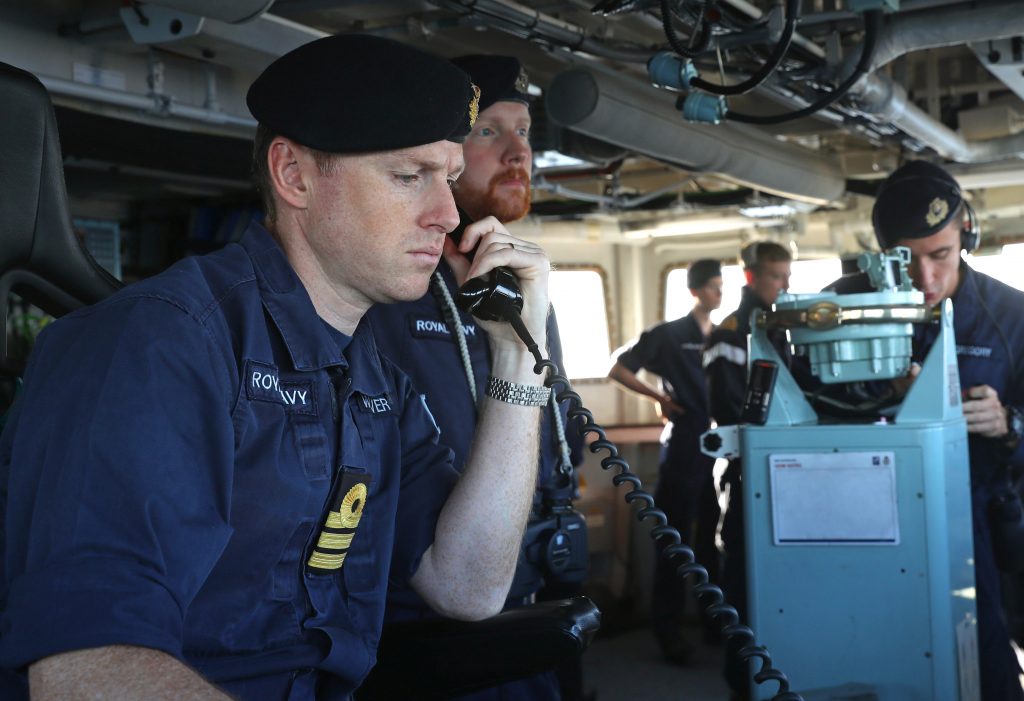
The joint NATO exercise came on the heels of a huge Russian exercise in the Bering Sea, off Alaska’s coast in late August, involving more than 50 warships and about 40 aircraft.
Almost at the same time, the U.S. flew its B-52 strategic bombers close to the Russian airspace in a show of force that included six aircraft capable of carrying nuclear weapons making symbolic overflights over all 30 NATO allies, including Canada.
Canadian defence expert Rob Huebert said the decision to carry out an exercise in the Russian EEZ, which adjoins a country’s territorial waters but is considered international waters, was meant to send a signal to Moscow.
“From a political perspective, remember the NATO allies haven’t sailed that close within the Russian EEZ since the end of the Cold War,” Huebert said. “I can’t find any example of a NATO-based group doing that. There is a political symbolism in fact of NATO going into these waters.”
NATO’s increasingly assertive moves in the Arctic are a response to Russia’s growing military presence in the Arctic and Northern Atlantic, Huebert said.
“This is something that the Russians have been doing for a fairly long time, pushing into the West,” Huebert said.
The joint U.S., U.K., Norwegian and Danish operation in the Barents Sea is the latest example of the West pushing back against Russia on a maritime basis, Huebert said.
“To a certain degree what we are seeing is a return to great power politics and the games that are then associated with that,” Huebert said. “They’re deadly games.”
Not a freedom of navigation operation
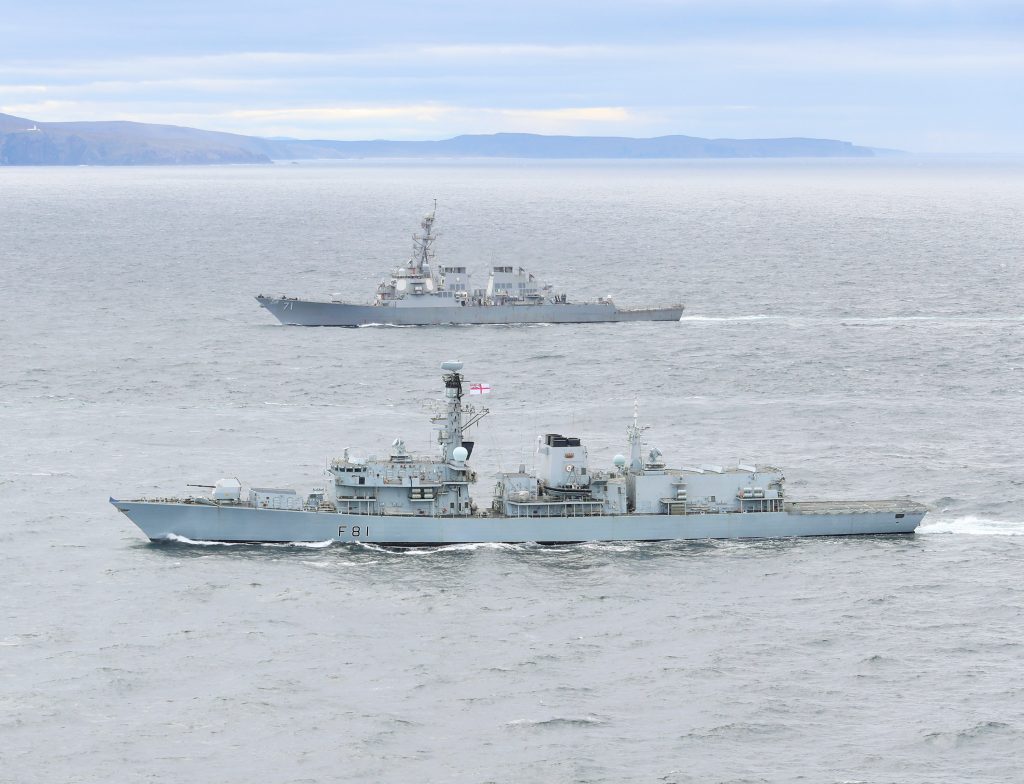
Rebecca Pincus, an assistant professor at the U.S. Naval War College, said that while the Royal Navy claimed the exercise was intended to assert freedom of navigation, the multilateral exercise was a classic maritime security operation.
“A freedom of navigation operation would be an operational assertion that counters excessive maritime claims and there are no excessive maritime claims in the Barents that are being challenged, none of the countries challenge Russia’s EEZ in the Barents,” Pincus said.
It is important to underline the difference between maritime security operations and freedom of navigation operations because the latter are targeted at coastal nations, she said.
“A maritime security operation is not specifically targeted at anyone, a maritime security operation – like what is going in the Barents Sea – is aimed at showcasing the level of coordination among allies and their technical skill at conducting multilateral operations in a challenging maritime environment,” Pincus said.
“A freedom of navigation operation is a strong assertion against a specific coastal state that is intended to boldly contradict that coastal state’s claims.”
For example, the United States conducts highly visible freedom of navigation operations in the South China Sea, she said.
“Those are bold, they are highly visible, they are very targeted against China and they are part of a much broader campaign to uphold freedom of navigation in the South China Sea that’s targeted squarely at China,” Pincus said.
Conducting a freedom of navigation operation against excessive Russian claims in the Northern Sea Route, which stretches along Russia’s Arctic coastline further east from the Barents Sea, would be an incredibly strong signal that would drastically ratchet up the level of tension in the Arctic region, Pincus said.
Growing risk of accidents and unintended consequences
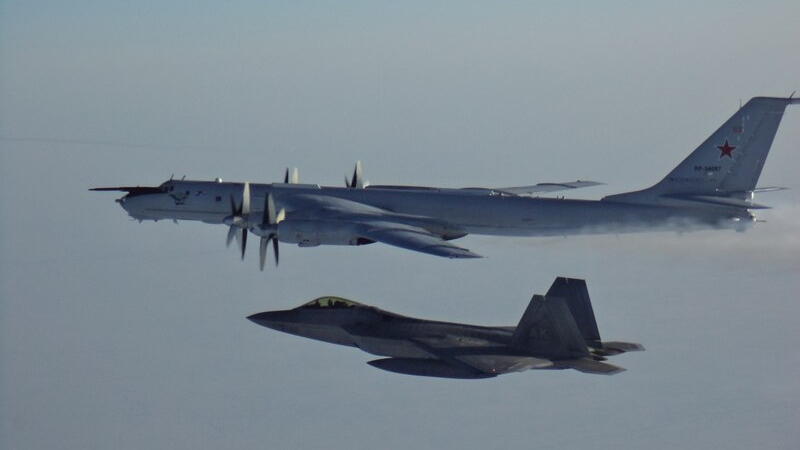
Nevertheless, the tit-for-tat wargames NATO allies and Russia have been playing in the Arctic with increasing frequency this year carry huge risks of accidents or other unintended consequences, Pincus said.
“Last week Russia conducted a joint military exercise in the Bering Sea, off the coast of Alaska, and they drove naval warships right through the Alaskan fishing fleet,” Pincus said. “It was incredibly dangerous, if something had gone wrong, who knows what would have happened.”
These exercises create a situation of a “classic security escalation,” she said.
“The thing is that these exercises confirm the worst fears of each side,” Pincus said.
“And that’s why each side feels compelled to respond. Russia is increasing military activity and its exercises, its overflights, patrols – all send a signal that it has the intention and capability of having an active military presence, which makes its neighbours uncomfortable.”
But when NATO responds with their own exercises, that validates Russian fears that NATO is trying to encircle them, she said.
“It’s this mirroring where neither side feels comfortable so it acts in a way that increases the anxiety on the opposite side,” Pincus said.
Within the last year, there has been a dramatic increase in these military exercises within the Arctic context, Huebert said.
“One could make the case that what we’re seeing is the next level of militarization that’s occurring,” Huebert said.
All this points to the necessity of a dialogue between the Arctic states and other countries that have been active in the region lately, Pincus said.
“Having more channels for communication and dialogue would help provide some reassurance, communication and transparency that would bring down some of these tensions,” Pincus said.
Providing advance notice of military exercises would also help alleviate some of the tensions, she added.
Related stories from around the North:
Arctic: Are potential Arctic security threats eclipsing urgent action on climate? A new study makes its case, Eye on the Arctic
Canada: U.S., NATO and Russia engage in cat-and-mouse game during Arctic training, Radio Canada International
China: China, Russia singled out in new U.S. Arctic defense strategy, Eye on the Arctic
Denmark: Pompeo to talk Arctic at upcoming meeting with Danish Foreign Minister, Eye on the Arctic
Iceland: Nordics should aim for common approach to China’s Arctic involvement says report, Eye on the Arctic
Norway: Increase in NATO scrambled jets from Norway, The Independent Barents Observer
Russia: Russian navy conducts major manoeuvres near Alaska, The Associated Press
Sweden: Sweden’s FM calls for more EU involvement in Arctic as country hosts EU Arctic Forum, Radio Sweden
United States: U.S. appoints special coordinator for the Arctic to advise on national security, economic issues, Eye on the Arctic

